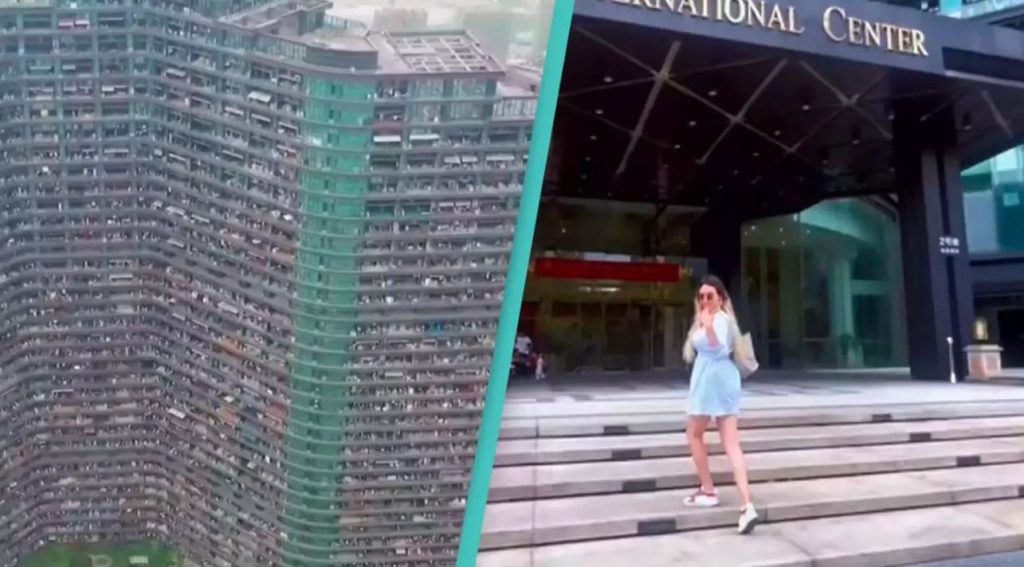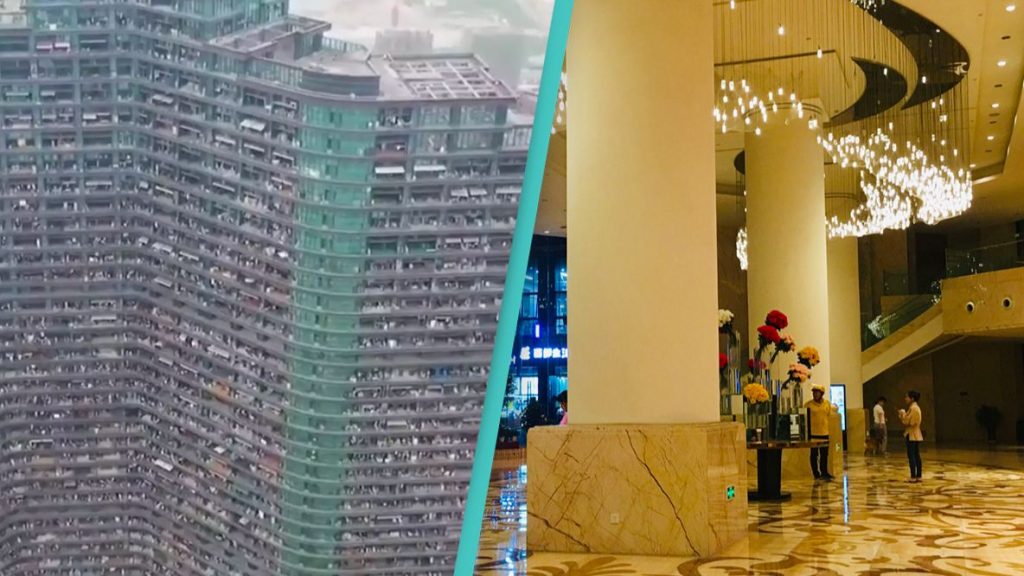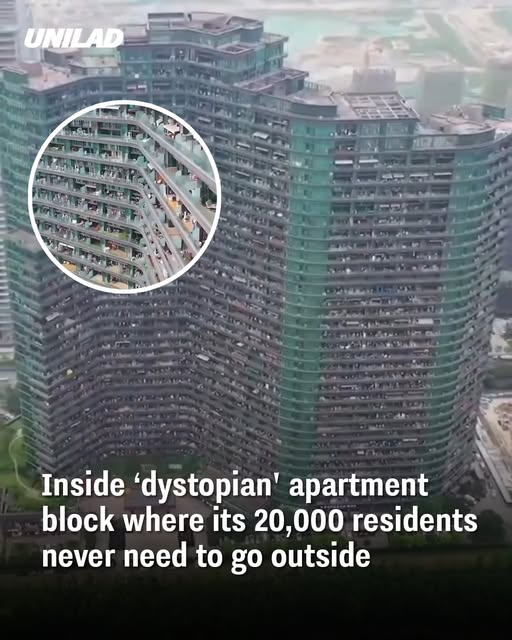In a suburban district of Hangzhou, China, lies an extraordinary complex known as the Regent International Apartment block. This S-shaped structure is often described with terms like “dystopian” or “mega-city in a building,” and for good reason: it contains around 5,000 apartments across a footprint of 260,000 square meters, and it is reported to host up to 20,000 people.
The building is located in Qianjiang Century City, a bustling central business area of Hangzhou. The complex rises to about 675 feet in height and is designed so that, in theory, its residents would rarely need to step outside its walls. All essential services and amenities are housed within its vast interior.
An All-Inclusive Lifestyle
What makes the Regent International Apartment block remarkable is how much it incorporates inside its walls. From shopping and personal care to entertainment and essential facilities, the complex is a self-sufficient microcity. Within its halls, one finds a massive food court, supermarkets, barber shops, nail salons, swimming pools, and even internet cafés. Whether one lives near the center or on its periphery, access to daily services is possible without stepping outdoors. Thanks to videos circulating on social media, especially TikTok drone footage, many have peered into this building’s interior and witnessed its scale firsthand. In one such video, the enormity of the structure became obvious: hundreds of floors, myriad corridors, and countless internal passageways through which residents can move freely without ever leaving the building.

Design and Origins
The Regent International was originally intended to be a six-star hotel concept under the vision of architect Alicia Loo, who previously worked on prominent luxury hotel projects. Over time, that vision shifted, and the building evolved into a residential and commercial hybrid that now serves as a vertical city. Its residents tend to be students, recent graduates, and young professionals drawn by relatively affordable rent and the convenience of urban life condensed into one location.
The Price of Isolation
Locals report that smaller units—some of them windowless—are rented for about 1,500 RMB per month (approximately $210). In contrast, larger units which include balconies or windows command rent of up to 4,000 RMB monthly (around $570). These figures make the building notably less expensive than many major cities’ housing markets, particularly in comparison with places such as New York, where rents can exceed $4,000 for a modest apartment.
However, the idea of spending most, or all, of one’s life within a single building raises numerous questions. Critics warn that the design may encourage extreme isolation, reduce contact with the outside world, and create conditions of psychological strain. Proponents argue that the convenience and efficiency of a self-contained environment offer real benefits, especially in densely populated urban settings.

Implications for Urban Design
The Regent International Apartment block prompts broader reflections on how cities might adapt to rising populations and land scarcity. As urban centers grow, planners are increasingly evaluating vertical, multiuse structures that can house, feed, entertain, and provide services for thousands in compact footprints. Yet, this example also highlights tensions: between convenience and confinement, between community and insularity. While some may view living entirely inside one building as efficient or futuristic, others may see it as a dystopian experiment in urban isolation. Whether this model becomes more common or remains a curious outlier, it underscores the evolving relationship between architecture, social life, and the way humans inhabit dense cities.

















